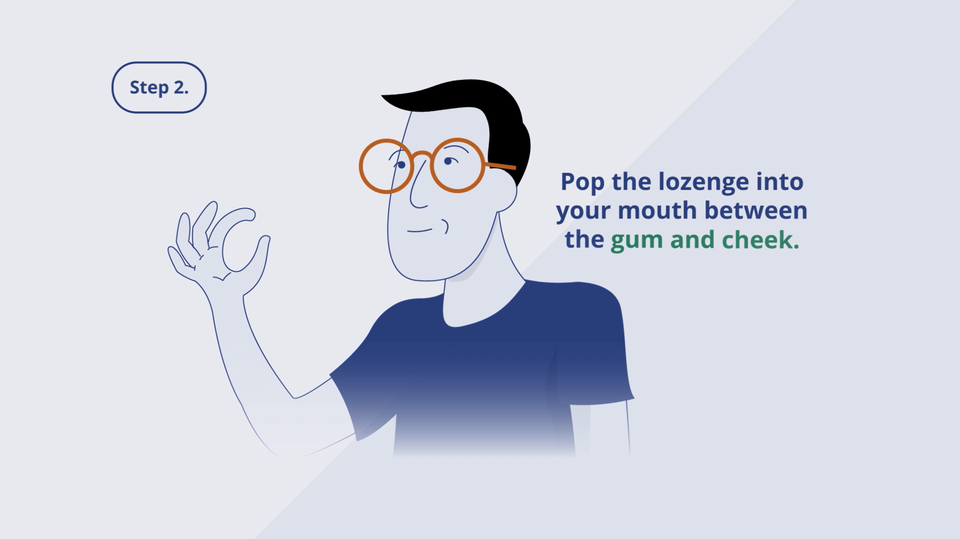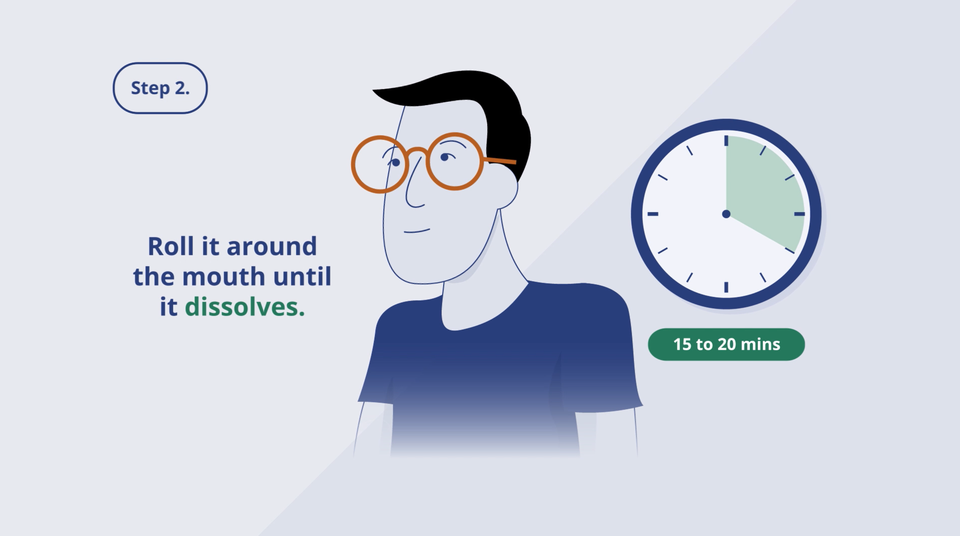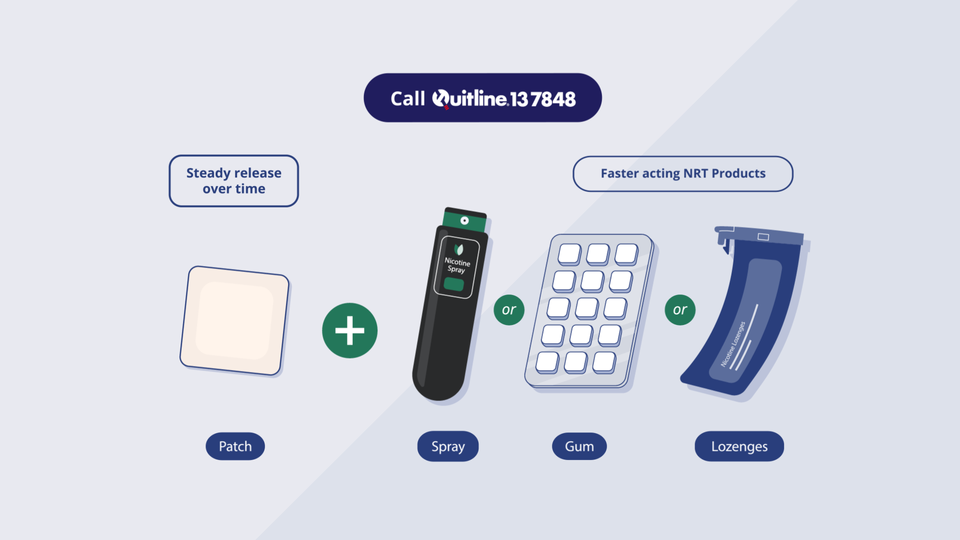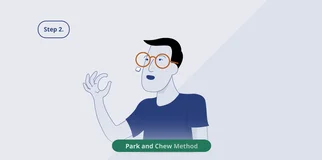Nicotine lozenges
The nicotine lozenge is a type of nicotine replacement therapy (NRT) that can be used to help you stop smoking. It helps to reduce cravings and feelings of withdrawal by replacing some of the nicotine you would normally get from smoking. Nicotine lozenges are often used together with the nicotine patch, which is a long-acting type of NRT, to help you quit. Watch the video and read the information below to learn about the nicotine lozenges and how to use them to help you stop smoking.
How to use the nicotine lozenge – the "Roll Technique" (aka "Cheek to Cheek")
Unlike other lozenges, you don't chew, suck or swallow the nicotine lozenge. Nicotine is absorbed through the mouth and slowly released into your body, so using a nicotine lozenge is all about adopting the ‘roll technique' (or the 'cheek to cheek' technique as it is also known).
There are two easy steps:
Step one: Take a lozenge when you feel like smoking. Even better, try to anticipate when a craving might strike and use a lozenge before the craving takes hold.

Step two: Pop the lozenge in your mouth between the gum and the cheek and roll it around the mouth from time to time until it dissolves completely. This should take around 15 to 20 minutes. Do not chew, suck, or swallow the lozenge.
Some types of acidic drinks like coffee, fruit juice, soft drinks or beer can affect how well the lozenge works. Wait for 15 minutes after having these drinks before using the lozenge. The lozenge also won’t work as well if you take it while eating or drinking.

How nicotine lozenges help
Nicotine lozenges help by replacing some of the nicotine you would normally get from smoking; they can help to manage cravings. Using nicotine lozenges can also help to manage some of the other symptoms of nicotine withdrawal when you quit such as difficulty concentrating, frustration, restlessness and anxiety.
What dose should I use?
The nicotine lozenge comes in two strengths: 2mg and 4mg (or 1.5mg or 4mg for the mini-lozenge). The right strength and dose for you depends on when you have your first cigarette in the morning and the number of cigarettes that you smoke each day – talk to your doctor or pharmacist about the right dose for you.
Use the lozenge for at least eight weeks, reducing the strength and frequency of use as directed.
For your best chance of quitting
For your best chance of success, call Quitline and use a faster-acting type of NRT (mouth spray, gum or lozenge), along with the nicotine patch. It is safe to use these two types of NRT together. NRT helps to reduce your cravings to smoke, while Quitline will help you to identify your other triggers to smoke. Call 13 7848 to speak to our friendly and qualified Quitline counsellors today.

For more information: talk to your doctor, pharmacist or Quitline. Your doctor or pharmacist are best to advise you on your use of NRT. Our Quitline counsellors can give general advice and support to ensure you are using it correctly.
For an overview of nicotine replacement therapy, watch our NRT frequently asked questions video. You can also via the patient resources on the Alfred Health website.
If you're thinking about quitting
Quitline counsellors can offer you free advice and support to help you stop smoking and/or vaping. They will work with you to help you build and keep up your motivation, create a plan that works for you, and guide and encourage you along the way. Quitline counsellors can also support you if you are using vapes to stop smoking.
There are many ways to get in touch with Quitline 13 7848. Hit the button below for more detail:
Please note, this information is for general use only. Please consult your health professional for further advice.
If you would like to provide feedback, please contact quit@quit.org.au
Last updated March 2024



